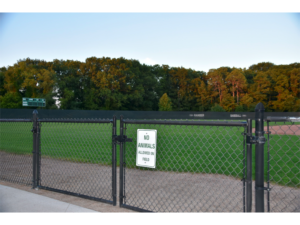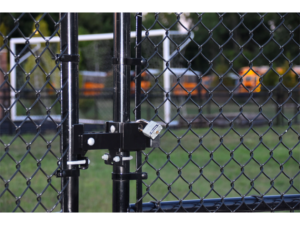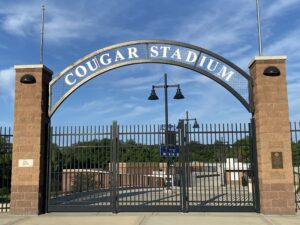The beginning of a new school year means that high school football will soon be underway. Hopefully, for the first time since the pandemic began, the excitement of these events that we once took for granted will once again be experienced across the country.
However, in the enjoyment of games, marching bands, cheerleaders, and more, it’s easy to forget the environment of the football stadium, even at the high school level – from the entrance gates to the fence around the field – is designed to provide both function and safety for players as well as fans.
Jen Klassen, owner of DAC Industries, explains that athletic field fences provide crowd control, venue security, and safety for sporting events. “These fences differentiate specific areas of the sporting fields and spectator areas, and whether the fence screens athletes or protects viewers, it becomes part of the game.”
She adds that a well-designed athletic field requires a great deal of planning and attention to detail. “Regardless of its size and seating capacity, there are common elements that deserve careful consideration to make sure everyone can safely enjoy the game. Using the right materials in the right places is critical.”
Klassen and her team at DAC offer the following guidelines to keep in mind when planning fencing for a football, or any sports, field:
Proper Fencing Material
The venue and level of play should be considered when determining what fencing material will be used at the field. Chain link is one of the most versatile fences for athletic use since it allows spectators to see while still providing good protection. If privacy from non-paying spectators is a concern, sight-line obstructing vinyl slats can be added. When it comes to installing a chain link fence around an athletic field, it is equally important to include padding for that fence, particularly in a sport like baseball, when players often run into the fence. Be sure to place brightly colored padding on the top of the fence and possibly behind the goalposts so that any high-speed collision is not with the metal of the fence itself. This protects athletes and can help extend the life of the fence.
Securing a Field
The size of the school often determines the style of the fence around the exterior of a high school football stadium because this is typically budget-driven. Smaller schools may again have chain link. Larger schools with bigger budgets may have an ornamental metal fence along the side of the stadium that parallels the road. Specialty fencing is usually a four-foot chainlink fence used on the edge of the bleachers to ensure that spectators (mainly children) do not slip between the railings.
Every fence needs a secure gate at its entry point. DAC’s Strong-Arm Latch is a great example of a secure solution that will keep the fence closed and secure while still allowing for easy entry. It also eliminates the need for a drop rod, which makes it very versatile. A padlock can be attached for added security when the field is not in use.
Access Control
As with all aspects of the fencing industry, the need for increased, infallible security is critical in athletic venues. There is a constant need for balance between safety of occupants and maintaining security of an exterior perimeter. While there are many exit hardware and access control products available, options for gate hardware are significantly narrowed when dealing with components that are exposed to harsh outdoor environments and heavy use and abuse, like those in an athletic field setting. This is something that should be considered for every entry point throughout the facility.
Emergency Exit Planning
Most athletic facilities at schools have a utility gate closer to the building through which maintenance machinery, training equipment and players can enter the field. This gate is kept locked when not in use. There is usually a separate, single entrance for fans, both for security and for ease of collecting tickets or entrance fees. However, in the event of an emergency, this one entrance should not be the only exit for spectators. Part of the planning for any athletic facility should include fast, safe emergency evacuation through designated emergency exits of spectators and athletes. Panic bars and panic exit hardware are recommended because they are designed to prevent tragedies from occurring.
Panic bar technology, also known as a crash bar, is designed to allow people to exit an area during an emergency situation. “This is something we feel strongly about at DAC, and encourage contractors to consider for all projects, even if local building codes do not require it,” says Klassen. “We manufacture accessories that allow panic bars to be installed on a gate that locks from the outside. This keeps an area secure while still ensuring occupants have a quick way out in the event of an emergency.” She says there are several different types of panic bar hardware and accessories available that are ideal for sports fields and arenas. Some require codes for access, while others use keyed entry. “The right solution depends on local regulations and individual project needs. It’s technology that will both keep property secure and save lives in the event of an emergency.”
Click HERE to check out this article as featured in FenceNews




